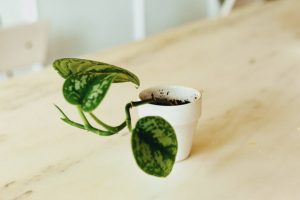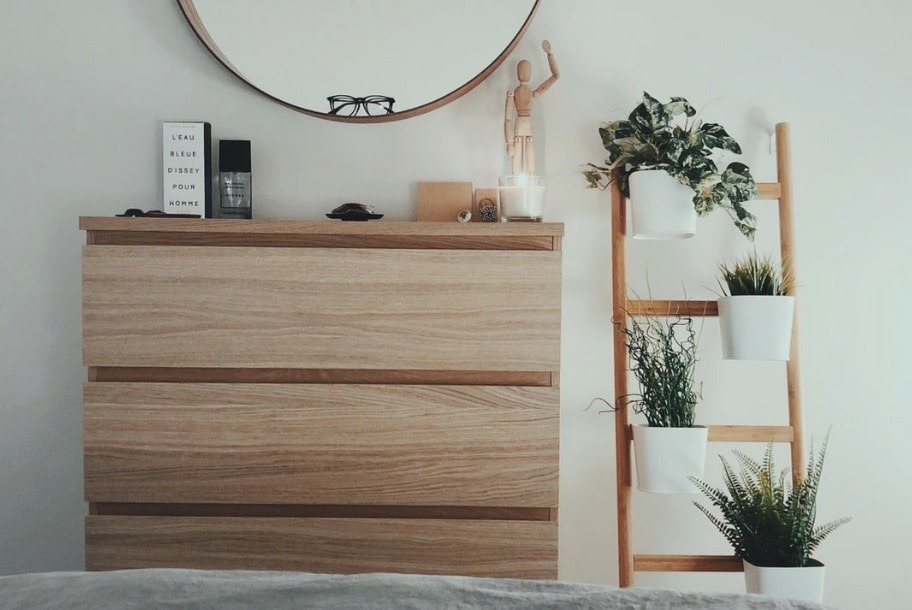Looking for ways to spruce up your apartment? Finding your place stuffy and want to create more clean airflow? Try adding air-purifying plants to your home!
how do plants improve air quality?
Plants clean the air by turning carbon dioxide into fuel for their growth. Plants absorb gas through pores on the surface of their leaves.
Photosynthesis is the process by which plants convert light and CO2 into energy and fuel. Indoor plants can absorb many volatile organic compounds (VOCs). Some common VOCs is benzene, which is found in plastics and cigarettes and formaldehyde, which can be found in cosmetics, detergents, cleaning products and even carpets.
Using plants to absorb these VOCs is called phytoremediation. Phytoremediation is a clean up technique, it is the use of any plant to alleviate pollution in air, soil or water.
7 air purifying plants and how to take care of them
Japanese Royal Ferns:
-
- ferns test highest formaldehyde removal efficiency
- moderate maintenance will need some TLC
- keep the soil moist and likes some pruning in the fall
- grows in low light or part sunlight (best with indirect sunlight)
Spider Plant:
- easy to maintain low maintenance and bounces back quickly
- grow in low light and part sunlight (best with indirect sunlight)
- it is pet safe (ASPCA.org)
- produces oxygen
- removes pollutants (absorbs CO, formaldehyde, xylene)
-
-
-

Spider Plant – AdobeStock by Karri Shea
-
-
Peace Lillies:
-
- moderate maintenances
- water several times a week and good drainage (can become waterlogged
- soil needs aeration: sand and coco peat 1:1 ratio is best
- leaf cleaning = necessary to avoid dust accumulation
- can cause damage or dry up from interrupted photosynthesis
- indirect sunlight
- fertilizer with nitrogen, phosphorus and potassium (water-based fertilizers) once a month
- toxic to cats and dogs (oral irritation, excessive drooling, vomiting)
- removes pollutants (benzene, formaldehyde)
Aloe Vera:
-
- the gel inside leaves used to heal burns and various skin conditions
- produces aloe latex (yellow pulp found under outer plant leaf)- has laxative properties
- toxic to cats, dogs, horses (gel is considered edible ASPCA.org)
- removes formaldehyde and benzene
- low/medium maintenance – indirect sunlight
- doesn’t require much water (wait until the soil is dry 2inch) too much water causes root rot
- likes to be fertilized around April-September
- big pot for growth and potting mix = dry, sandy soil (not too rich in moisture)
Golden Pothos:
-
- low maintenance – best in indirect light
- water only when the soil is dry (can live in low light) forgiving tends to bounce back quickly
- removes benzene, toluene, formaldehyde, CO, xylene
- increases humidity and absorbs CO2 and Ozone
- toxic to dogs and cats (oral irritation, drooling and vomiting ASPCA.org)

Pathos – AdobeStock by Dan Gold
Areca Palm:
-
- low/medium maintenance – water to keep the soil lightly moist in spring/summer and slightly dry soil in fall/winter
- enjoys bright, indirect light
- absorbs pollutants (acetone, xylene and toluene)
Boston Fern:
-
- medium/high maintenance needs TLC – cool location with high humidity and indirect sunlight
- soil should remain damp and fertilizer several times a year
- susceptible to some pests (spider mites, mealybugs)
- absorbs pollutants for fuel and energy
- Non-toxic to cats and dogs (ASPCA.org)
Up Next … Do Healing Crystals Really Work?
